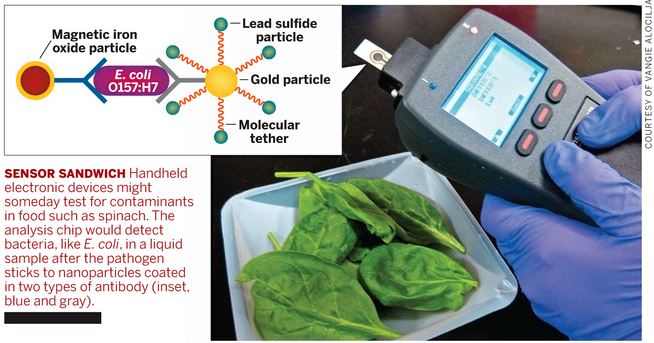
Preventing Food-Borne Illness
June 29, 2013As recently highlighted at the ACS (American Chemical Society) meeting, nanomaterial and especially magnetic-particle-based sensors might one day help to prevent food-borne illness by quickly detecting bacteria such as Listeria on food and in the water used to wash food.
For more information, check out the entire article here.
MagForce AG Receives Approval to Start the Post-Marketing Study in Glioblastoma with NanoTherm® Therapy
June 26, 2013
.jpg) MagForce AG (Frankfurt, XETRA: MF6), a leading medical technology company in the field of nanomedicine in oncology, announced today that it has received approval from the German Federal Institute for Drugs and Medical Devices (BfArM) to start the post-marketing clinical study in recurrent glioblastoma. The approval of the ethics committee was previously granted end of December 2012 and the Company will now proceed to install the required NanoActivators™ in the treatment centers and preparing for the clinical study initiation.
MagForce AG (Frankfurt, XETRA: MF6), a leading medical technology company in the field of nanomedicine in oncology, announced today that it has received approval from the German Federal Institute for Drugs and Medical Devices (BfArM) to start the post-marketing clinical study in recurrent glioblastoma. The approval of the ethics committee was previously granted end of December 2012 and the Company will now proceed to install the required NanoActivators™ in the treatment centers and preparing for the clinical study initiation.
The trial is an open-label, randomized, controlled study to determine the efficacy and safety of NanoTherm® monotherapy alone and in combination with radiotherapy versus radiotherapy alone in up to 280 glioblastoma patients. It will be conducted in about 15 centers in Germany and will be initially started in five leading centers, including the University Hospitals Berlin, Duesseldorf, Giessen, Cologne and Muenster. Together with a steering committee of leading experts in neurooncology, MagForce has designed a study protocol to support and supplement the results of a previous study, which led to the approval of the NanoTherm® Therapy and its medical devices in brain cancer. In addition, the application procedure of the NanoTherm® particles into the tumor should be optimized. This study is also designed to comply with the current guidelines for the development of medicinal products.
"We are excited about the BfArM approval that now triggers the start of our post-marketing clinical study, which we have carefully prepared over the last few months in collaboration with leading neurosurgeons, neurooncologists, and radiotherapists. With this trial we intend to provide validation of the available results with our NanoTherm® Therapy involving leading medical experts in the field of neurooncology, the key opinion leaders in the application of this technology", Prof Dr Hoda Tawfik, COO and co- CEO of MagForce, commented.
For more information, check out MagForce's website at
http://www.magforce.de/en/studien/uebersicht.html
Iron and Magnetism in Schistosome Eggshells
May 28, 2013
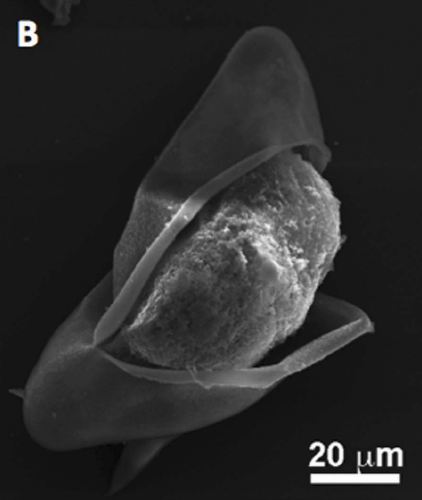
The researchers determined the magnetic properties of the eggs, studied the motion of eggs and egg-microsphere conjugates in magnetic fields and determined species specific affinity of parasite eggs to magnetic microspheres. Iron is predominantly localized in pores in the eggshell. Beautiful electron microscopy pictures and investigations suggest that the interaction of magnetic microspheres and parasite eggs is unlikely to be magnetic in origin. Instead, the filamentous surface of the eggshells may be important in facilitating the binding. Modification of microsphere surface properties may therefore be a way to optimize magnetic fractionation of parasite eggs.
DNA Driven Assembly with Nanoparticles
May 27, 2013Nanoparticles can be the bricks for constructing materials from the ground up, with DNA linkers as the mortar that holds them together. Because of the difficulty of attaching DNA strands to nanoparticles, the approach has so far been limited to a few types of nanoparticles. Chad A. Mirkin and coworkers at Northwestern University have devised a general approach that expands the types of nanoparticles that can be used with DNA-guided assembly (Nat. Mater. 2013, DOI: 10.1038/nmat3647).
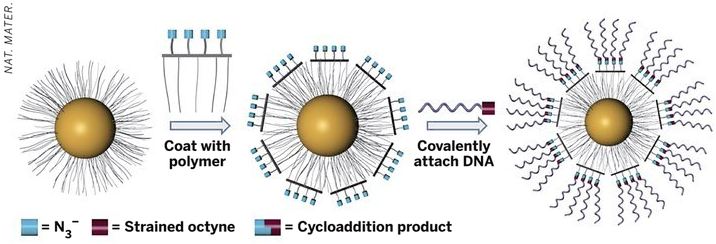
Stem Cell Tracking with Magnetic Particle Imaging (MPI)
May 23, 2013
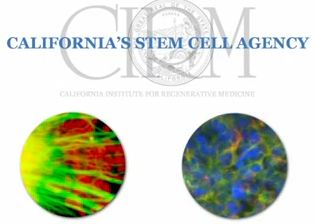
Check out the youtube video here.
Riboflavin carrier protein-targeted fluorescent USPIO for the assessment of vascular metabolism in tumors
May 20, 2013

Check it out in detail here.
Learning from Nature to Improve Heat Generation with Magnetic Nanoparticles
April 13, 2013
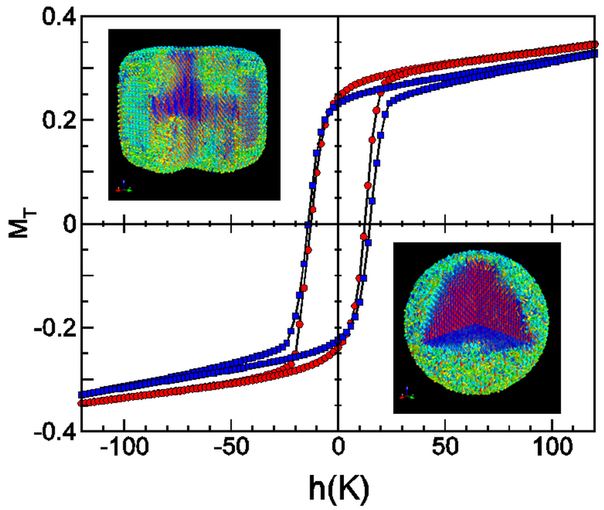
The article is available on Scientific Reports 3, 1652 (2013).
Clinically Relevant Magnetic Particle Applications in New Publications
April 01, 2013
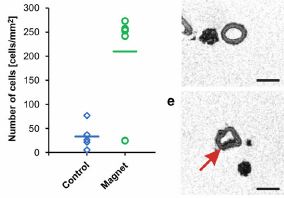
The first is a research paper by Johannes Riegler et al. about the use of magnetically loaded stem cells to improve cell retention in cell therapies for treating vascular injuries. This is a joint research project carried out in both University College London and the National University of Ireland. The article can be downloaded here.
The other is a book chapter included in the last edition of the Specialist Periodical Reports published by the Royal Society of Chemistry (RSC). It is co-authored by Daniel Ortega and Quentin Pankhurst, and it covers the basic physical-chemical-biological aspects of magnetic hyperthermia, including a review of some clinical case studies. If you are interested, you can find it here.
For more information, check out our Archives.
September 2017

Search this site with the power of

